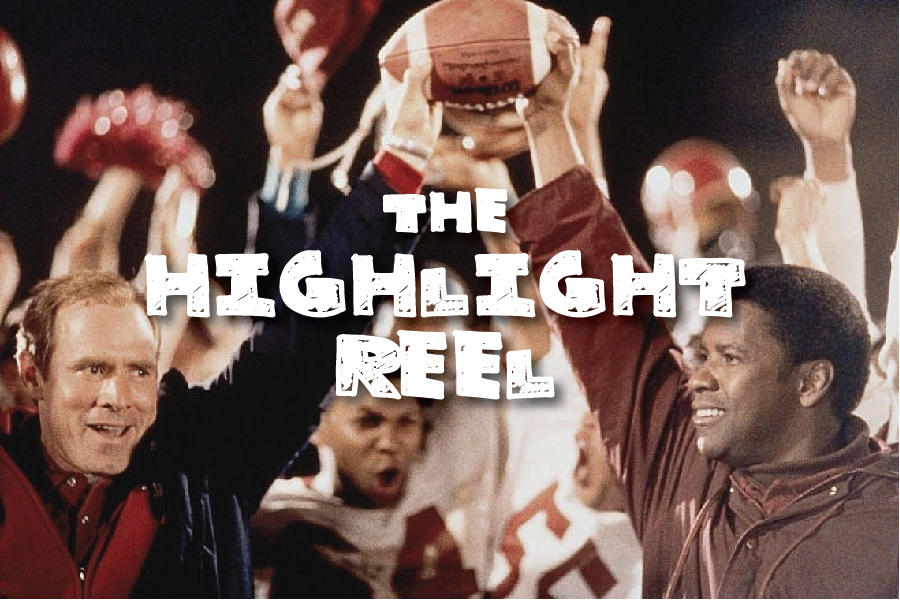The Highlight Reel
“Double Teamed” and Disney’s American Dream
Photo by Marisa Valdez
Image copyright Walt Disney Pictures
“Double Teamed” is a 2002 Disney Channel Original movie about a pair of athletically-apt high school twins and their journey from being star volleyball players… to being star basketball players.
The story is based on the real-life Heather and Heidi Burge, twins who went on to play professional basketball in the WNBA and on European basketball teams.
Overall, the plot is pretty straight-forward.
There’s some complications involving the family having to move into a wealthier school district for the sake of the sisters’ sports careers, lessons about teamwork and a portrayal of sisterhood that would probably ring true for anyone with competitive siblings.
“Double Teamed” was a fun watch, and it’s clear that if someone grew up with it, it’d probably feel like a classic. That being said, it felt a little too straightforward and humorless for my adult tastes.
There’s something more interesting hidden beneath the surface of “Double Teamed,” though, especially if the person watching the film has spent the last two and a half months regularly watching other Disney Channel Originals.
I watched the first half of the movie with my girlfriend, who has occasionally joined me on my odyssey through this strange sub-genre of film. She grew up watching “Double Teamed,” and has a lot of nostalgia for this and other Disney Channel Original movies.
However, she immediately pointed out that “Double Teamed” begins with the classic Disney Channel Original opening — a sunny suburban neighborhood, a house that’s way too big for a “middle class” income and a quirky, but generally happy nuclear family.
As we waited for “Double Teamed” to get rolling with its story, we chatted about some of the strange trends in these movies.
For one, these movies almost always feature an allegedly middle-class family who appear to be living way beyond their means by today’s standards. Their yard is big, and their kids purchase niche gear for obscure sports without stress.
White picket suburbia is the de facto setting of these movies, which makes sense as suburban kids were probably these movies’ core demographic, but it still feels off from my 2023 perspective.
Following that line of thought, it’s possible that the standards of middle-class that we see in these movies really were accurate for the 1998-2003 era that they were made in.
So, maybe the fact that a “middle-class” lifestyle in the year 2000 seems so far out of reach from my perspective two decades later says more about how things have changed, rather than Disney Channel’s filmmaking.
However, the family dynamic is almost universally the same in all of these films.
Households are invariably two-parent, with the exception of Peter in “Brink,” who has a Jerry instead of a dad. Most have happy children who rarely act out, and they quickly learn their lesson if they do.
There’s usually some sort of conflict between the main character and their dad, and sometimes the dads truly are royal jerks, but they also always learn their lesson within 90 or so minutes.
There’s also interesting trends involving the movie’s middle-class characters suddenly moving into the next tax bracket or at least interacting with wealthier counterparts.
I spent a lot of time in the past day or two thinking about these trends, and what they might mean.
Is Disney trying to push some warped, idyllic vision of America? Are these Disney Channel Original movies I’ve spent so much time watching nothing more than hollow propaganda for capitalism and the nuclear family?
To be honest, that sort of was my initial, cynical conclusion. As I write this, though, I remember more of my conversation with my girlfriend during “Double Teamed.”
She mentioned how unrealistic this vision of life was, but off-handedly alluded to the fact that it’s a vision of the life that kids want.
A kid might be living in a cramped, working-class house where they argue with their parents, struggle to make friends and can’t afford a brand new derby car at the drop of a hat, but when they turn on Disney Channel, they get to escape into a brighter, simpler version of the world they live in.
Famous film critic Roger Ebert once described reviewing movies as “covering the nation’s dream beat.”
Maybe the world of Disney Channel Original movies is some capitalist Disney executive’s dream of perfect, middle-class American life… or, maybe, it’s just the dream of your average turn-of-the-millenia kid.
I’m not sure, but I’m sure I’ll keep this way of looking at these films in mind as I continue my journey through the bizarre world of Disney Channel Original sports movies.
Porisch can be reached at porischn7213@uwec.edu.

Nick Porisch is a third-year English student, and this is his fourth semester at The Spectator. Most of the time you can find him just sitting around someplace, potentially writing but usually just sitting. On the rare occasion he’s not sitting around, he might be rock climbing or running. But most likely he’s just sitting somewhere.


